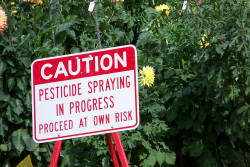Suzette Brewer, Indian Country Today Media Network
Signaling the end of Civil Rights era reformation, the Supreme Court on June 25 ruled in Shelby County v. Holder that section four of the landmark Voting Rights Act is unconstitutional. According to voting rights experts and political scientists across the country, the ruling clears the way for states with poor histories in discrimination and voting violations to change election laws and enact procedures without federal preclearance or oversight.
In essence, the 5-4 decision issued by Chief Justice Roberts gutted the Act, ruling that while the section was necessary when the law was enacted by providing a formula for determining which jurisdictions would be covered under federal law, “current conditions” make that section unconstitutional. Previously, all or part of 15 states had been required to seek federal consent to any changes that may hinder the rights of minorities in elections.
For Indian country, the ruling has potentially devastating consequences for tribes residing in South Dakota and Arizona, as both states are specifically mentioned in the Act because of their repeated violations in gerrymandering, vote splitting, unreasonable polling placement and other discriminatory practices. While Charles Mix County in South Dakota is still under court order for preclearance until 2024, Shannon, Todd and Bennett counties are no longer required by law to apply for approval of their election laws.
“It’s incredibly terrifying for the Native community in South Dakota,” said Jana Kooren, interim executive director for the South Dakota office of the American Civil Liberties Union. “Striking down section four presents a real challenge to the tribes here because it essentially just made it easier for South Dakota to put up road blocks in allowing free, fair and accessible voting to Indian people.”
Election officials in South Dakota, however, minimized the impact of the decision, noting that the federal government rarely denied changes requested by the state.
“While it’s true that the ruling is limited in impact,” said Dr. Dan McCool, co-author of Native Vote, “what you’re going to see is a lot of law suits now coming out of section two of the act. And make no mistake, South Dakota holds the record for voting rights violations lawsuits.”
Section two of the Voting Rights Act, says McCool, specifically prohibits racial gerrymandering, vote splitting, and unfair voting practices, such as moving polling places to unreasonable places with the intent to hinder voter turnout.
“[The ruling] is also a very bad thing for tribes in Arizona,” said McCool, who is a professor of political science at the University of Utah and editor of The Most Fundamental Right: Contrasting Perspectives on the Voting Rights Act. “White election officials can now make changes in election laws without federal preclearance, and that could leave tribes vulnerable if local governments engage in election law changes that would have otherwise been rejected under section five. Even so, the rest of VRA is still intact, and that means tribal members must have equal opportunity to elect the candidates of their choice.”
But, he cautioned that it is now imperative that for section five to be effective that Congress will have to come up with another formula.
According to Kooren, efforts are already under way to seek a Congressional remedy to protect the rights of minority voters in states with historical problems in voting rights. She said that states under previous preclearance requirements are already rushing to pass new laws before Congress comes up with a new formula and that the reservations in South Dakota could be negatively affected until that happens.
“We’re encouraging Congress to pass a new formula that protects the rights of all voters,” said Kooren. “We believe that Shannon, Todd and Bennett counties should remain covered by the preclearance requirements because of the long, tortured history of abuses in those areas. And we need it to happen quickly.”
Regardless of yesterday’s ruling, said Kooren, the ACLU will continue to work on behalf of the tribes in South Dakota to ensure that the voting rights of tribal members remain intact.
“If necessary, we will continue to sue under section two,” said Kooren, “regardless of what happens to the coverage formula.”
In her scorching dissent issued from the bench, Justice Ruth Bader Ginsburg forcefully decried the Court’s circumvention of Congress’s authority to seek fair and equitable voting privileges for all Americans.
“The sad irony of today’s decision lies in its utter failure to grasp why the VRA has proven effective,” said Ginsburg. “The Court appears to believe that the VRA’s success in eliminating the specific devices extant in 1965 means that preclearance is no longer needed…. With that belief, and the argument derived from it, history repeats itself.”
Read more at https://indiancountrytodaymedianetwork.com/2013/06/26/supreme-court-ruling-impacts-voting-rights-indian-country-150143













